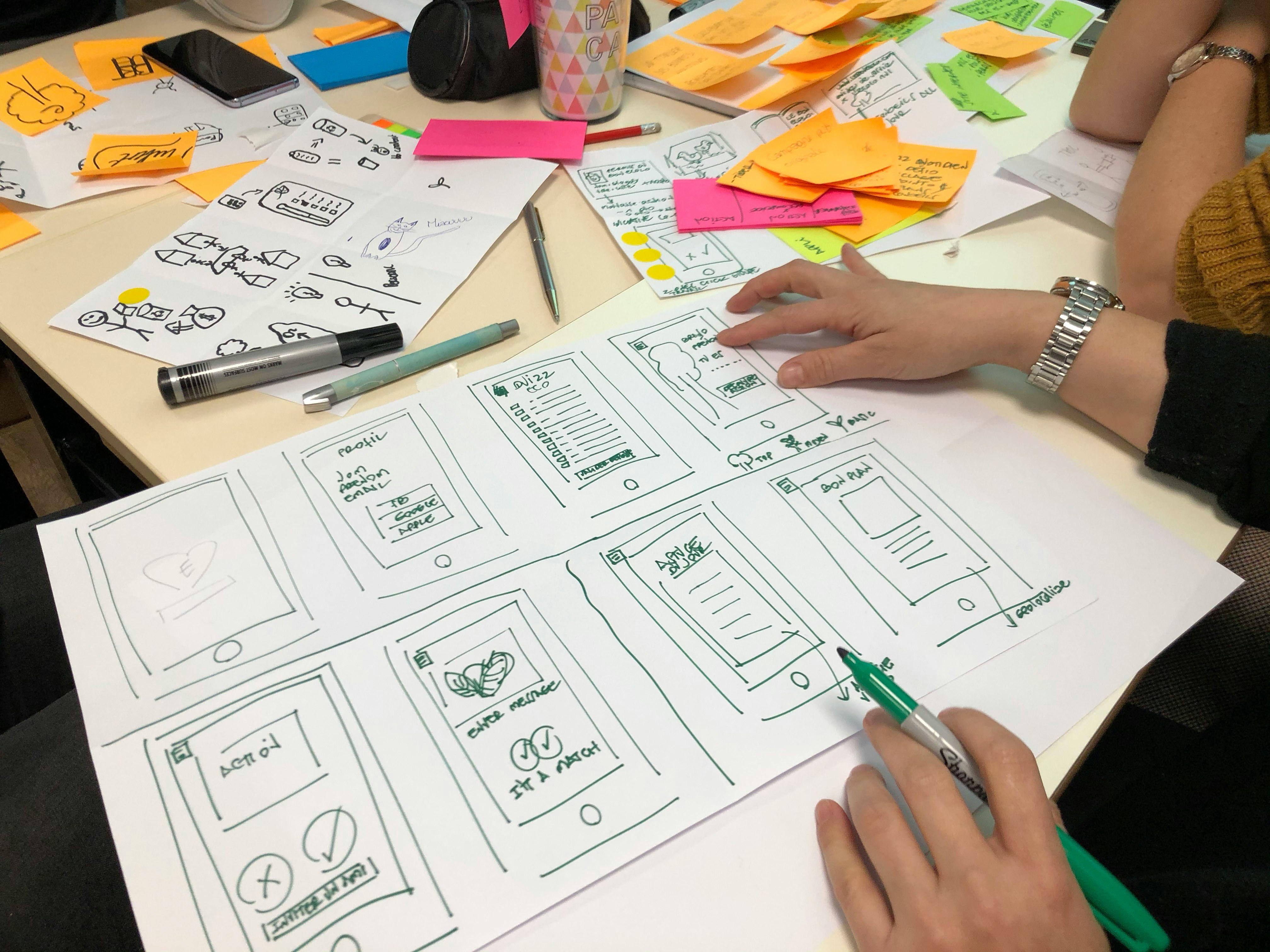
Why Product Management is Key to Thrive in the Digital Economy
In the digital economy, products are constantly evolving to respond to changing market conditions. More than ever, product managers need to adapt to changes and pivot plans to ensure their products remain relevant. In this article, Dr Markus Karner, Academic Director of SMU Executive Development, shares with us more about generating innovative solutions in the digital economy. Meanwhile, Yasmin Yunus Tamboli, who has taken SMU's Product Management course, reveals how the programme has helped her thrive in her role.
In today’s digital economy, products are constantly evolving and need to be updated quickly in response to customer feedback and changing market conditions. This requires plenty of agility and flexibility, which are competencies that product management professionals require to thrive in an increasingly digitalised world.
After all, a product mindset is essential to supercharge an organisation because it zooms in on what customers want and need, rather than what business decision makers think they need. This focus on the customer ultimately leads to optimised product development, manufacturing and business success. Today, optimal product management entails being able to adapt to changes and pivot plans as needed in order to ensure that products remain relevant and in demand.
We speak with Academic Director of SMU Executive Development, Dr Markus Karner, who teaches an online module on Product Management, to learn more about generating innovative ideas and solutions. Meanwhile, programme graduate Yasmin Yunus Tamboli reveals challenges faced by product managers, and how the course has helped keep her remain competitive and relevant during the digital disruption.
Essential skills for product management in a digital economy
Design thinking is a problem-solving approach that takes into account the user’s perspective when creating new products or improving on existing ones. It’s often used in product management to create intuitive, easy-to-use designs that meet the needs of the customer.

“Design thinking and agile methods can help enormously in dealing with constant change.”
Dr Markus Karner, Academic Director of SMU Executive Development
As companies increasingly move towards a digital economy, product management is — correspondingly — becoming more complex. Design thinking can help simplify this process by applying creativity and empathy to the design and development of products.
“The general skills required for product management are not much different from other strategic requirements: listening to the pulse of the times, fail fast and cheaply, and test and iterate often —because the digital economy is fast-paced and no clear or permanent answers exist,” says Dr Karner.

“Design thinking and agile methods can help enormously in dealing with constant change.”
In recent years, the wave of digital disruption had led to an unprecedented discontinuity experienced by organisations due to technological changes. One needs only look at the current Covid-19 pandemic to witness how digitalisation has drastically changed overnight the way we live and work. Businesses have had to rapidly adapt their operations to survive, with many turning to digital technologies to stay afloat.
“We are witnessing how the world is changing at an exhilarating pace and how important it is to have an open mindset to observe and adapt to changes,” observes Yasmin, a senior manager at EFS Facilities Services.
“You need to consider such shifts in your business to make your product stand out in this competitive world. With digital transformation, new technologies are getting created faster and faster, generating more business opportunities which generates new perspectives in the market.”
For example, Dr Karner reveals that the digital world has brought about entire new product categories such as peer-to-peer platforms and de-materialisation —the process of transitioning from a physical to a digital format. The ability to access experiences directly, without necessarily buying products, has changed the face of consumption, he explains. Product management had to evolve to accommodate entirely new business models, such as platform ecosystems, network forms, the disappearance of old sources of competitive advantage and the appearance of new ones.
The evolving world of product management
With the advent of the digital economy, the landscape of consumption has changed dramatically. In the past, changes in trends and tastes could take years to filter down to the level of individual consumers. Today, however, those changes can happen almost overnight.
“The biggest challenge is that product development takes time, and some technologies evolve fast,” notes Dr Karner.
“The second biggest challenge, specifically in networked economies, is that a product’s value is often defined by the ecosystem value. As a result, the product is not really ‘designed’ anymore by a single firm, but by the vagaries of the entire ecosystem.”
Yasmin manages the development of computer-aided facility management (CAFM) products called “FMPRO,” which helps to tailor facility management services that monitor, plan and manage her client’s work based on business priorities. An umbrella term for the application of computer technology to the area of facility management, CAFM systems support, automate or improve tasks such as facilities planning, space utilisation analysis, real-time tracking of maintenance work and asset management.

“While working on this initiative, I was curious about how product management actually works, so I enrolled in SMU’s product management course to understand all other aspects of product management of the sector,” she says.
“The course has helped me to understand those steps in detail — from product portfolio strategy to launching and managing product in market. It was well-designed with insightful lectures on a module each week.”
Responsible for product deliverables in her current role, Yasmin leveraged upon methods she had gleaned from the module Product Management Method: Lean & Agile to develop a standard operating procedure (SOP) for her company’s Product Developments cycle. The SOP has proved vital for knowledge transfer and to align every member of her team to their vision.
The future is now
In the product world, data is king. Whether it’s tracking user engagement to make better decisions about what features to build next or using analytics to understand how customers are using a given product, data is essential for making informed decisions. But as any good product manager knows, gathering and understanding data is only half the battle — one also needs to be able to harness that data effectively to drive a product. So what does that mean for today’s product managers?
“Analytics have several enormous advantages that partially offset the challenges of the digital economy,” explains Dr Karner.
“When data about prospective customers are better known, their desires and needs can be better addressed. Depending on product type, they also allow better customisation. This allows us to address the ‘long tails’ — the large number of relatively rare niche products that people desire but that don’t necessarily exist (yet).”
A long tail product is one that sells low individual volumes of hard to find items – in contrast to blockbuster products that are main cash cows and sell in high volumes. Long tail products, in the aggregate, may still generate greater overall revenue.
Today, adds Dr Karner, product management trends are heading towards even shorter product life cycles. Companies that are able to read the signs of the times to produce entirely novel product categories, and not just products, now thrive over their peers.

"Analytics have several enormous advantages that partially offset the challenges of the digital economy."
Dr Markus Karner, Academic Director of SMU Executive Development
How to navigate a product management career of tomorrow
A career in product management can be both rewarding and challenging. But how can you make sure that you’re on track for a successful future in this career field? As Dr Karner relates, the course he leads provides the essentials of Product Management set against the context of today’s world. It includes Design Thinking and Agile Methods, but also classic product management tools such as product life cycle planning.
“It talks about classic products, but also addresses network economics and ecosystems,” adds Dr Karner.
“It is a solid introduction into the subject and takes it far into the most up-to-date approaches and questions.”
While product development is a complex and nuanced process, Yasmin acknowledges that the course has imparted some key principles that increase the likelihood of success.
One of the most important is to have a product mindset, while another lies in identifying opportunity gaps; in other words, being able to see potential areas for innovation that others may have missed. This requires being able to define the problem statement and opportunity size, and then designing a product that is customer-centric and competitive.
“I try to apply what I have learnt, such as designing customer centric products and identifying product opportunity gaps, into my current product, to understand our clients’ and users’ pain and gain and continue to enhance our product,” shares Yasmin.
“This is just a start considering my current roles and responsibilities, but I will keep applying my learnings in due course.”
Learn more about how you can lead the full product management process to deliver value to your customers with the SMU Executive Development Product Management programme.




